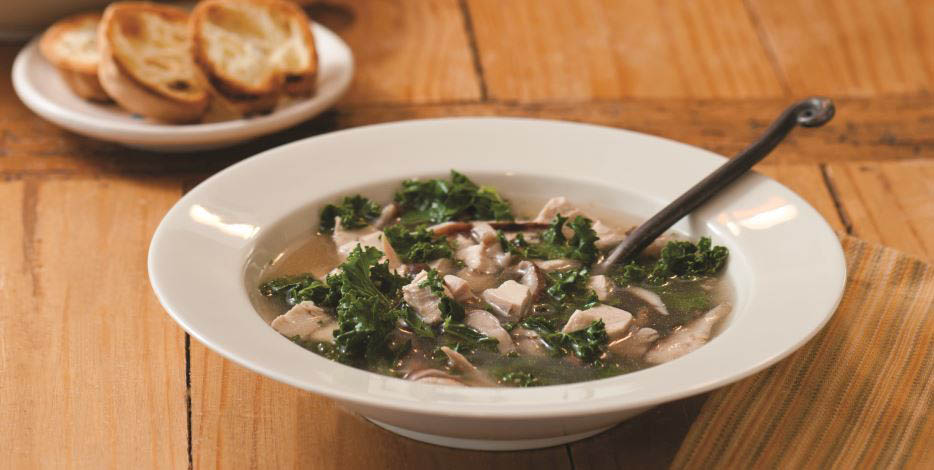Feed a Cold.
In the first century AD, so the legend goes, a Roman physician prescribed chicken soup to heal Emperor Nero’s persistent respiratory infection. It must have worked because ever since then, chicken soup has become mom’s and grandma’s go-to choice for easing the symptoms of the common cold.
Now, it turns out there may be some scientific truth to the old wives’ remedy. Chicken soup is filled with nutrients that shore up the immune system, reduce inflammation and loosen mucosal secretions. The way chicken soup is prepared affects its healing benefits, so make it the oldfashioned way: Start with a whole chicken and make your own broth, since simmering the bones enhances the cysteine content that helps support immune health.
And if you don’t eat chicken, not to worry: Many common components of chicken soup, such as garlic and mushrooms, are also potent cold-fighters. Not up for the time and effort it takes to cook soup from scratch? Other foods, such as kale, yogurt and strawberries, have similar protective effects and are simple to prepare and enjoy on the fly.
You can eat your way out of a cold—and even nip one in the bud—with these power-packed infection fighters.
Chicken soup is high in cysteine, an immune-boosting amino acid that inhibits neutrophils (white blood cells) and reduces inflammation. In addition, hot soup loosens and thins out mucus, making it easier to expel from your body. (See sidebar for our chicken soup with a twist recipe that incorporates many of the other immune-boosting foods we love all winter.)
Garlic contains allicin, a powerful antimicrobial that can minimize the symptoms of a cold and shorten its duration. To maximize the allicin content, mince fresh garlic, let it stand for 10 minutes to allow the allicin to develop, and add it during the last 5 to 10 minutes of cooking.
For thousands of years traditional Chinese medicine has used ginger to treat cold symptoms; its antimicrobial effects help ward off bugs, and its spicy kick acts as an antihistamine and decongestant for those pesky stuffy noses.
Mushrooms, especially shiitakes, are rich sources of beta-glucan, a potent antiviral and immune system modulator that you can only find in a few other sources, such as cereal grains, yeasts and good bacteria. Beta-glucan content in shiitakes is so powerful, it’s been studied for its ability to fight serious viruses, including hepatitis B and HIV.
Beta-carotene, which enhances your body’s natural killer cell activity and fights off viruses, is abundant in kale and other leafy greens such as Swiss chard and spinach. Kale is also a great source of glutathione, a powerful anti-oxidant that supports the immune system.
You’ve heard about oranges and their high vitamin C content, but strawberries are also rich in cold-fighting vitamin C and are among the most anti-oxidant–rich foods according to recent studies. They also contain anti-inflammatory properties that can help ward off cold bugs. Other berries and cherries have similar cold-fighting potential.
Miso seasoning or paste, which is a mix of rice, barley or—most commonly—soy, is rich in probiotics, beneficial bacteria that have long been used to fight infectious diarrhea and irritable bowel syndrome (IBS) and have recently been shown to prevent and treat colds, especially in children. Adding miso to soups and sauces gives dishes extra flavor.

